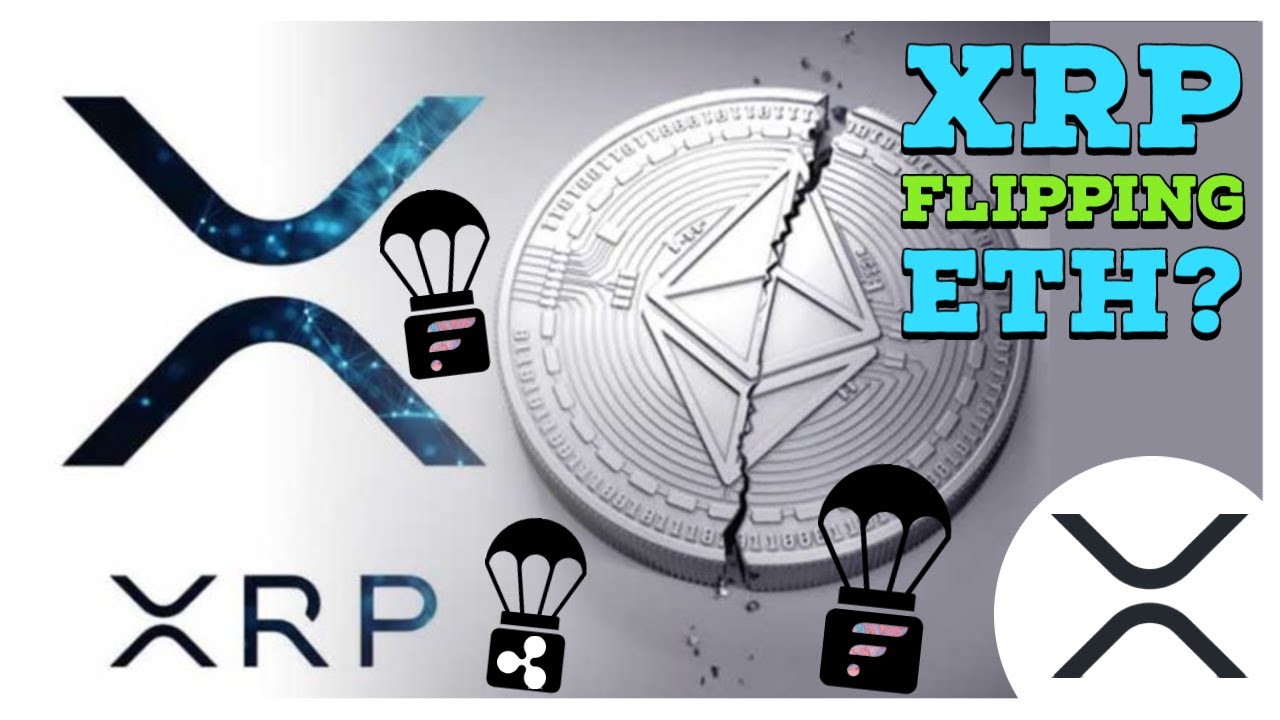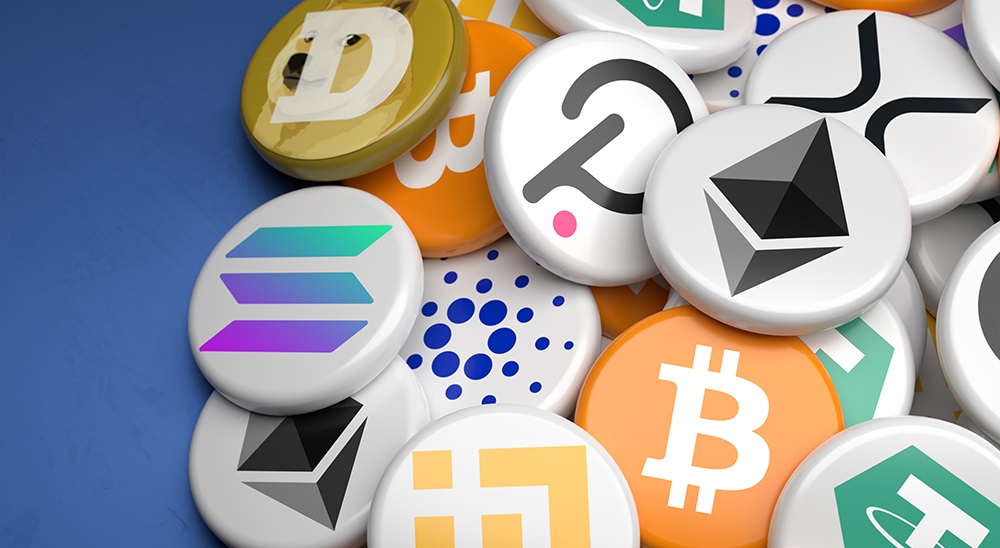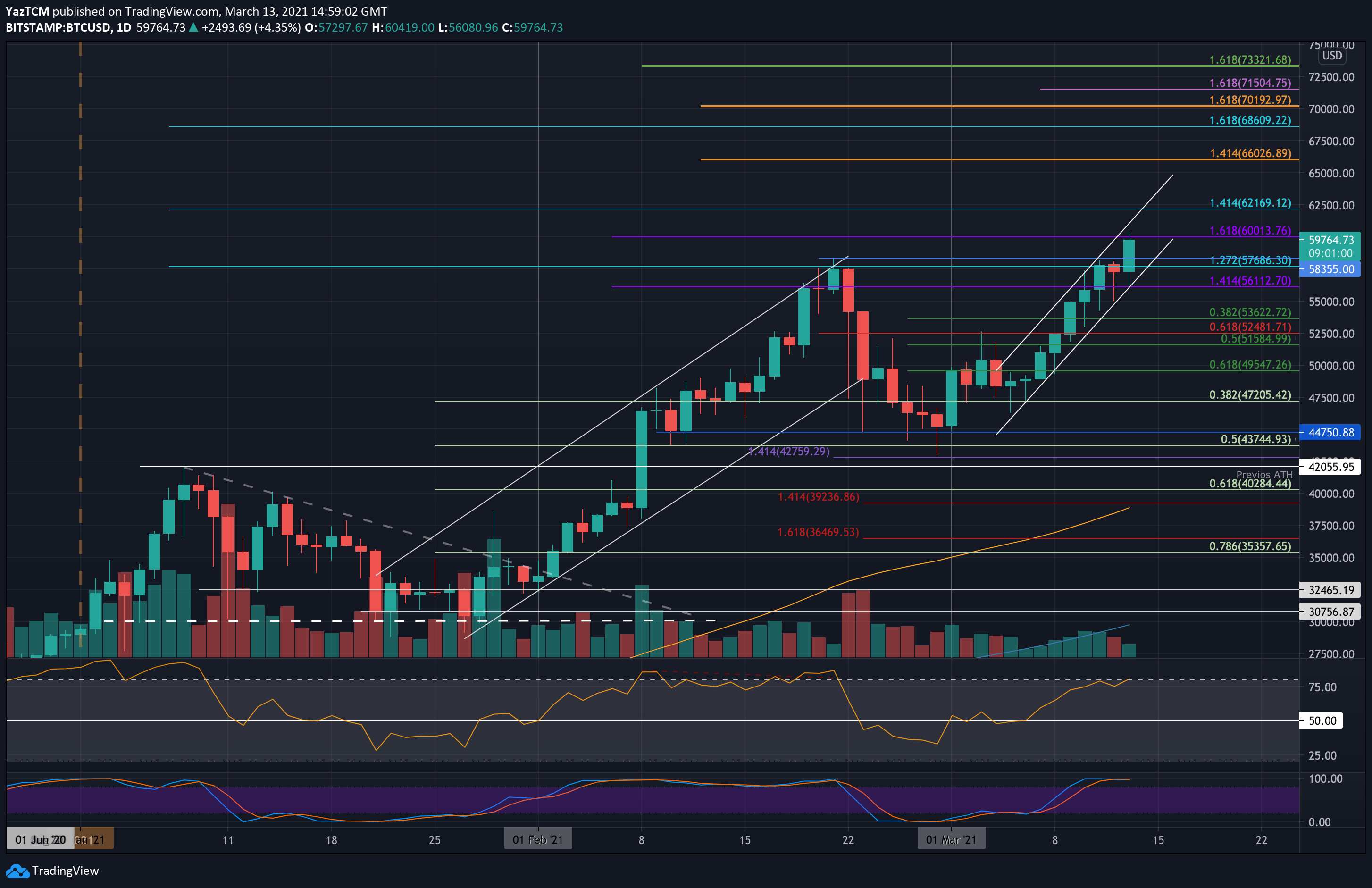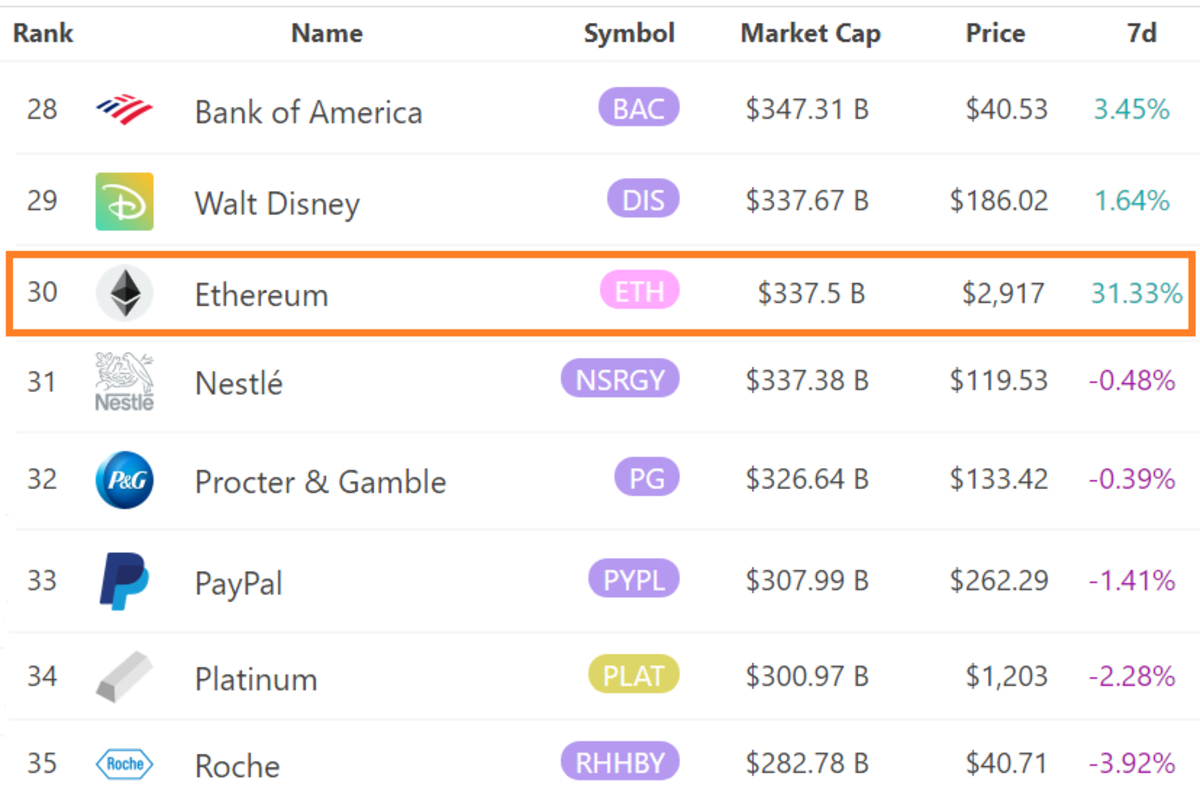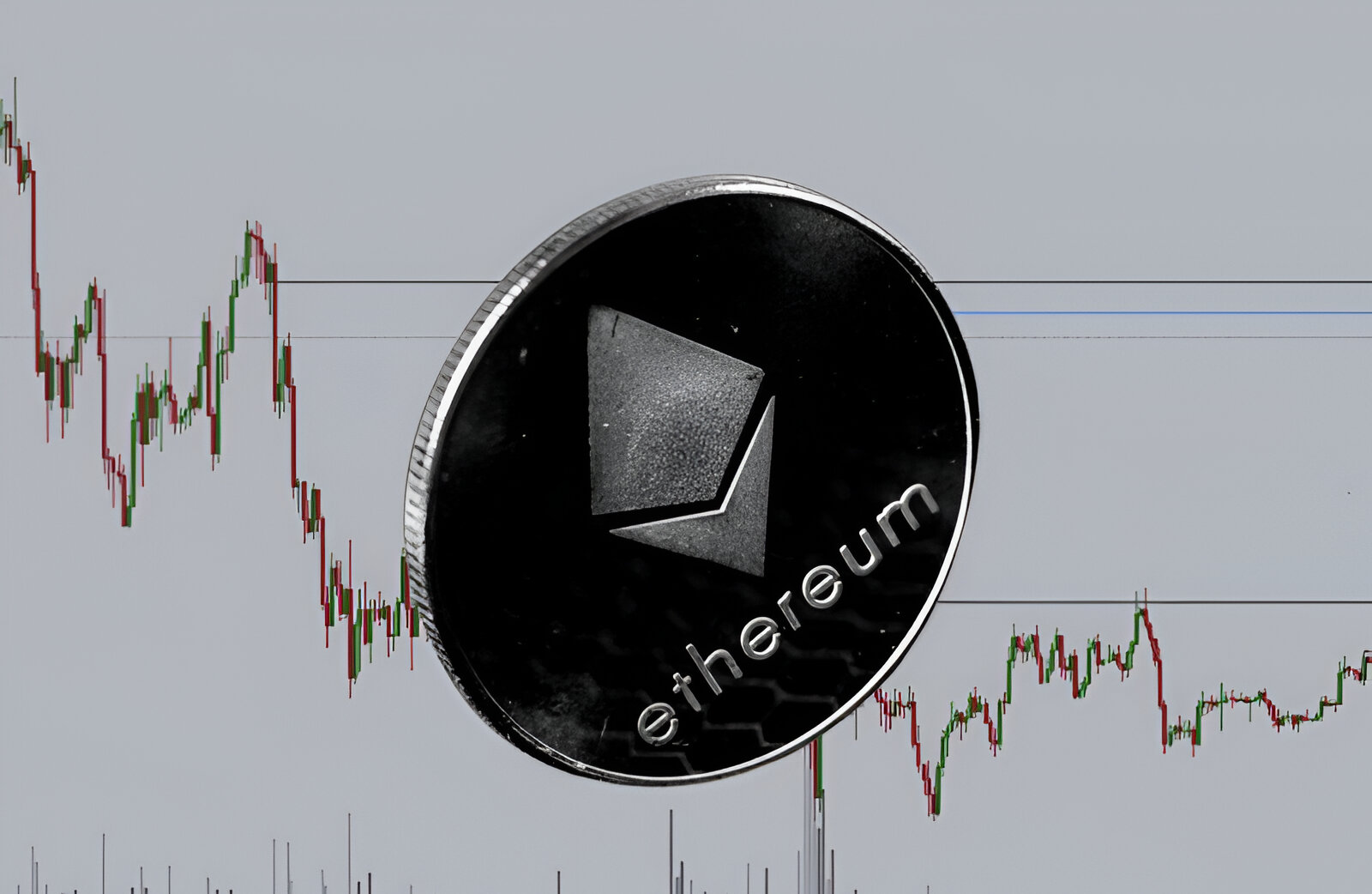Introduction
When it comes to the realm of cryptocurrencies, there are two major players that dominate the market: Ripple and Ethereum. Both of these blockchain platforms have gained significant traction and have a strong following amongst investors and developers alike. While Ethereum has long been hailed as the “king of smart contracts,” Ripple is steadily emerging as a force to be reckoned with in the world of global payments and financial transactions.
In this article, we will delve into the reasons why Ripple may surpass Ethereum in the near future. From market capitalization to scalability, we will explore the key factors that make Ripple an attractive contender in the cryptocurrency space. While Ethereum undeniably has a solid foundation, Ripple’s unique features and strategic alignment with traditional financial institutions could propel it ahead in the race for dominance.
It’s important to note that this article does not aim to denigrate or discredit Ethereum in any way. Instead, it seeks to shed light on the immense potential that Ripple possesses and the advantages it holds over its competitors. Both platforms have their strengths and weaknesses, but Ripple’s focus on real-world use cases and partnerships sets it apart in the rapidly evolving landscape of cryptocurrencies.
So, without further ado, let’s dive into the details and examine why Ripple has the potential to surpass Ethereum and become a leading player in the digital currency revolution.
Overview of Ripple and Ethereum
Before we delve into the specific reasons why Ripple may surpass Ethereum, let’s first gain a deeper understanding of these two blockchain platforms.
Ethereum was launched in 2015 as an open-source blockchain with its native cryptocurrency, Ether (ETH). It quickly gained popularity due to its smart contract capabilities, which allow developers to build decentralized applications (dApps) on top of the Ethereum network. These smart contracts enable the automation of agreements and transactions, making Ethereum a versatile and decentralized platform for various applications.
On the other hand, Ripple, also known as the RippleNet, was introduced in 2012 and aims to revolutionize the global remittance and payments industry. While Ethereum focuses on smart contracts and dApps, Ripple is primarily designed to facilitate fast, low-cost cross-border transactions. Its native cryptocurrency, XRP, serves as a bridge currency to enable seamless transfers between different fiat currencies.
One key distinction between Ripple and Ethereum lies in their consensus mechanisms. Ethereum currently utilizes a proof-of-work (PoW) consensus algorithm, which requires significant computational power and energy consumption. In contrast, Ripple employs a unique consensus protocol called the Ripple Protocol Consensus Algorithm (RPCA). This consensus mechanism allows for faster transaction confirmation and lower energy consumption, making Ripple a more sustainable option for high-volume, real-time transactions.
Furthermore, Ripple’s focus on partnerships with traditional financial institutions has been a key driver of its growth. Ripple has already formed strategic alliances with major banks and payment providers around the world, including American Express, Santander, and Standard Chartered. These partnerships not only enhance Ripple’s credibility but also provide a network effect that increases the adoption and usability of its technology.
In terms of market capitalization, Ethereum currently holds a higher valuation than Ripple. However, market dynamics can fluctuate rapidly, and Ripple’s increasing adoption by banks and financial institutions may contribute to a surge in its market capitalization in the near future.
Overall, Ethereum and Ripple are both influential platforms in the cryptocurrency industry. While Ethereum has made significant strides in enabling decentralized applications, Ripple’s focus on real-world use cases and partnerships may position it for rapid growth and market dominance in the realm of global payments and remittances.
Market Capitalization
Market capitalization is a crucial indicator of a cryptocurrency’s value and overall market standing. As of now, Ethereum holds a higher market capitalization compared to Ripple. However, it’s important to consider that market dynamics can change rapidly, and Ripple has been steadily gaining momentum in recent years.
Ethereum’s market capitalization is largely attributed to its early mover advantage and widespread adoption for dApp development. Its smart contract capabilities have attracted a vibrant developer community, resulting in a plethora of decentralized applications built on the Ethereum blockchain. As a result, Ethereum has become the backbone of the Initial Coin Offering (ICO) market, further solidifying its market position.
On the other hand, Ripple’s market capitalization has been driven by its unique value proposition in the realm of cross-border payments. Ripple’s focus on solving the inefficiencies and high costs associated with traditional remittance systems has garnered significant attention from banks and financial institutions worldwide.
While Ripple’s market capitalization is currently lower than Ethereum’s, its strategic partnerships with large financial institutions give it a unique advantage. These alliances provide Ripple with access to a vast network of users and potential customers, fueling its growth and adoption. Additionally, the use of Ripple’s native cryptocurrency, XRP, as a bridge currency for swift and cost-effective transactions further reinforces its position as a viable alternative to current payment systems.
Moreover, the growing interest from institutional investors in the cryptocurrency space has the potential to impact market capitalization significantly. Institutions seeking exposure to digital assets may see Ripple as an attractive choice due to its focus on compliance and regulatory adherence, which provides a sense of stability and trust within the financial industry.
It’s important to note that market capitalization alone should not be the sole determinant of a cryptocurrency’s potential. The underlying technology, partnerships, use cases, and real-world adoption are critical factors to consider. As Ripple continues to expand its network and solidify its position as a leading facilitator of global payments, its market capitalization may experience substantial growth, potentially surpassing Ethereum in the future.
Consensus Mechanism
The consensus mechanism is a fundamental component of any blockchain platform as it ensures the integrity and security of transactions within the network. Ethereum currently employs a proof-of-work (PoW) consensus algorithm, which requires miners to compete to solve complex mathematical problems to validate transactions and create new blocks.
While PoW has been effective in securing the Ethereum network, it does come with several limitations. The energy-intensive nature of PoW mining has drawn criticism due to its environmental impact and high computational requirements. Furthermore, the scalability of Ethereum’s PoW consensus mechanism has been a challenge, resulting in higher transaction fees and slower confirmation times during periods of high network congestion.
In contrast, Ripple utilizes a different consensus mechanism known as the Ripple Protocol Consensus Algorithm (RPCA). Instead of relying on miners to validate transactions, Ripple employs a network of trusted validators who collectively agree on the validity and order of transactions. This consensus protocol allows for faster transaction confirmation and significantly lower energy consumption compared to PoW-based blockchains like Ethereum.
Through the use of RPCA, Ripple achieves consensus within a few seconds, enabling the platform to handle a high volume of transactions quickly and efficiently. This scalability advantage positions Ripple as a strong player in the realm of real-time, cross-border payments, where speed and low cost are crucial.
It’s worth noting that Ripple’s approach to consensus has faced some criticism regarding its “centralized” nature, as Ripple Labs, the company behind Ripple, maintains control over the selection of trusted validators. However, Ripple has implemented measures to address these concerns, and their network has continued to operate reliably and securely.
As the blockchain industry evolves, consensus mechanisms continue to undergo innovation and development. Ethereum itself is transitioning to a proof-of-stake (PoS) consensus algorithm with the upcoming launch of Ethereum 2.0, which aims to address the scalability and energy efficiency issues associated with PoW. It remains to be seen how this transition will impact Ethereum’s competitive position against Ripple and other blockchain platforms.
Overall, while Ethereum’s PoW consensus mechanism has proven to be secure and robust, Ripple’s implementation of the RPCA offers notable advantages in terms of scalability, efficiency, and lower energy consumption. This unique consensus mechanism positions Ripple as a promising contender in the quest to revolutionize global financial transactions.
Scalability
Scalability is a critical factor for any blockchain platform seeking to handle high transaction volumes and accommodate future growth. While both Ripple and Ethereum have experienced scalability challenges, they employ different approaches to address this issue.
Ethereum’s scalability limitations stem from its current proof-of-work (PoW) consensus algorithm. The nature of PoW requires miners to compete to solve complex mathematical puzzles, which slows down transaction processing and increases network congestion during peak periods. This has resulted in higher transaction fees and longer confirmation times, making Ethereum less scalable for real-time applications.
To overcome these challenges, Ethereum is undergoing a significant upgrade known as Ethereum 2.0, which will transition the network to a proof-of-stake (PoS) consensus algorithm. PoS relies on validators who hold a certain amount of cryptocurrency to confirm transactions and create new blocks. With PoS, Ethereum aims to improve scalability by reducing energy consumption and enabling faster transaction processing.
On the other hand, Ripple has positioned itself as a highly scalable blockchain platform from the start. Unlike Ethereum’s PoW-based approach, Ripple uses the Ripple Protocol Consensus Algorithm (RPCA) to achieve consensus. RPCA eliminates the need for mining and allows the network to handle a high volume of transactions quickly and efficiently.
Ripple’s scalability advantage is particularly evident in its focus on facilitating real-time, cross-border payments. With the ability to handle thousands of transactions per second, Ripple provides an ideal solution for the fast and cost-effective transfer of funds across different currencies and financial institutions globally.
Furthermore, Ripple’s Interledger Protocol (ILP) enables interoperability between different blockchains, further enhancing its scalability. The ILP allows for seamless integration and communication between different blockchain platforms, expanding Ripple’s network reach and potential use cases.
While Ethereum’s scalability improvements through the transition to PoS are anticipated, it will take time for Ethereum 2.0 to be fully implemented and tested. In the interim, Ripple’s focus on scalability and real-world use cases gives it a competitive edge, especially in the payment and remittance industry where speed and efficiency are paramount.
As the demand for blockchain technology continues to grow, scalability remains a significant challenge. Both Ethereum and Ripple are actively working on solutions to address scalability limitations, but Ripple’s current advantage in scalability, coupled with its real-world adoption and partnerships, positions it strongly as a scalable blockchain platform for global transaction processing.
Transactions per Second
The ability to process a high volume of transactions per second is a crucial factor in determining the efficiency and practicality of a blockchain platform. In this regard, Ripple has a distinct advantage over Ethereum, as it has been designed specifically to handle a significant number of transactions in real-time.
Ethereum, with its proof-of-work (PoW) consensus algorithm, faces limitations in terms of transaction throughput. The current maximum capacity of the Ethereum network is around 15 transactions per second (TPS), which can be significantly reduced during periods of high network congestion. This constraint has led to slower confirmation times and higher transaction fees, impacting the scalability and usability of Ethereum for time-sensitive applications.
Ripple, on the other hand, has been purpose-built to handle a significantly higher volume of transactions per second. With its Ripple Protocol Consensus Algorithm (RPCA), Ripple can process a remarkable 1,500 transactions per second, with the potential to scale even further. This capability makes Ripple a highly efficient platform for real-time payment processing, where speed and reliability are essential.
The high TPS rate of Ripple makes it an attractive solution for banks and financial institutions that require immediate settlement of cross-border payments. Traditional systems often require several days for funds to be transferred, resulting in costly delays and increased risk. Ripple’s ability to process thousands of transactions per second provides a seamless and rapid solution for global payments, enabling financial institutions to enhance their operational efficiency and improve customer experience.
While Ethereum is in the process of transitioning to Ethereum 2.0 and its proof-of-stake (PoS) consensus algorithm, which is expected to significantly improve scalability, this upgrade has not yet been fully implemented. As a result, Ripple’s current advantage in terms of transaction processing speed gives it a competitive edge, particularly in use cases that demand real-time settlement and high transaction volumes.
It’s important to note that the transaction throughput of both Ripple and Ethereum can vary based on factors such as network congestion, block size, and the complexity of transactions. However, the fundamental design of Ripple, geared towards achieving high TPS, coupled with its real-world adoption and partnerships, position it as a frontrunner in facilitating rapid and efficient global payments.
As blockchain technology continues to evolve, scalability and transaction speed remain critical areas for improvement. While Ethereum’s transition to PoS holds promise, Ripple’s existing infrastructure and focus on real-world use cases provide it with a significant advantage in terms of processing high volumes of transactions per second.
Cost per Transaction
The cost per transaction is an important consideration when evaluating the practicality and affordability of using a particular blockchain platform. In this regard, Ripple offers a significant advantage over Ethereum, as it provides a cost-effective solution for global financial transactions.
Ethereum’s current proof-of-work (PoW) consensus algorithm requires miners to compete to validate transactions, which results in transaction fees. With the rise in popularity and network congestion, Ethereum has experienced a surge in transaction fees, making it more expensive to execute transactions on the network. While transaction fees can vary based on network conditions and transaction complexity, the cost per transaction on the Ethereum network has become a concern for users and businesses alike.
Ripple, on the other hand, takes a different approach to transaction costs. Ripple’s native cryptocurrency, XRP, serves as a bridge currency to facilitate seamless and cost-effective transfers between different fiat currencies. The transaction fees on the Ripple network, in the form of XRP, are significantly lower compared to Ethereum. This makes Ripple an attractive option for banks and financial institutions that require fast and affordable cross-border payments.
The low-cost nature of Ripple’s transactions can be attributed to its streamlined infrastructure and focus on real-time settlements. By eliminating the need for intermediaries and offering a direct peer-to-peer payment system, Ripple minimizes transaction costs and associated fees, enhancing the overall efficiency of global financial transactions.
Furthermore, Ripple’s commitment to regulatory compliance and collaboration with traditional financial institutions further contributes to its cost-effectiveness. By working within the existing regulatory frameworks and partnering with established banking networks, Ripple can leverage existing infrastructure to reduce transaction costs and provide greater accessibility to users worldwide.
It’s important to note that transaction costs can still fluctuate on the Ripple network, depending on factors such as network congestion and the overall demand for XRP. However, the underlying cost structure of Ripple, combined with its emphasis on affordability and efficiency, positions it favorably in comparison to Ethereum in terms of cost per transaction.
As the blockchain industry continues to evolve, there is an increasing need for low-cost, scalable, and efficient transaction processing. While Ethereum is exploring solutions to reduce transaction fees through its Ethereum 2.0 upgrade, Ripple’s current advantage in cost-effectiveness, coupled with its real-world adoption and focus on seamless global payments, makes it a strong competitor in providing affordable and rapid financial transactions.
Partnerships and Adoption
Partnerships and adoption play a crucial role in the success and growth of blockchain platforms. Both Ripple and Ethereum have actively pursued collaborations and sought adoption in different sectors, but Ripple’s strategic alliances with banks and financial institutions have positioned it as a leader in this aspect.
Ripple has forged partnerships with major players in the traditional financial industry, including banks, payment providers, and remittance companies. American Express, Santander, and Standard Chartered are just a few of the notable institutions that have joined forces with Ripple to leverage its technology for fast and cost-effective cross-border payments.
These partnerships provide Ripple with a substantial network effect, as its technology is integrated into existing financial systems. This integration enables seamless transactions between different financial institutions, eliminating intermediaries and reducing the time and cost associated with traditional remittance systems. The adoption of Ripple’s technology by prominent financial entities and their stamp of approval further increases confidence and trust in the platform.
In contrast, Ethereum’s partnerships and adoption primarily revolve around its role as a platform for decentralized applications (dApps). Ethereum has been a frontrunner in enabling the creation and launch of numerous successful dApps, attracting developers and businesses alike.
Ethereum’s ecosystem has fostered a vibrant community of developers who leverage the platform to create innovative solutions in areas such as decentralized finance (DeFi), gaming, and supply chain management. This widespread adoption of Ethereum for dApp development has solidified its position as the preferred blockchain platform for these use cases.
However, the focus on dApps limits Ethereum’s adoption in sectors such as global payments and remittances, where Ripple excels. While Ethereum’s move towards Ethereum 2.0 and its focus on scalability and improvements might open doors for broader adoption, Ripple has already built a strong network of partnerships that cater specifically to the needs of traditional financial institutions.
The strategic advantage of Ripple’s partnerships with banks is their alignment with existing financial infrastructure and regulations. This alignment enables Ripple to navigate the complexities of the financial industry and work towards compliance and regulatory adherence, a crucial aspect for banks and other financial institutions.
As blockchain technology gains wider acceptance and adoption, both Ripple and Ethereum will continue to seek partnerships and explore new use cases. The success of these platforms relies heavily on their ability to secure strategic alliances that drive adoption and provide real-world solutions. While Ethereum’s wide range of dApps showcases its versatility, Ripple’s focus on partnerships with established financial institutions gives it a significant competitive edge in the realm of global payments and adoption in the financial sector.
Banking Relationships
One of Ripple’s key strengths lies in its ability to establish strong banking relationships, setting it apart from other blockchain platforms like Ethereum. Ripple’s strategic partnerships with banks and financial institutions have propelled its adoption within the traditional banking sector and positioned it as a leader in facilitating global payments and remittances.
Ripple’s focus on real-world use cases and collaboration with banks has enabled it to bridge the gap between traditional financial systems and the innovative world of blockchain technology. By working closely with banks, Ripple has gained valuable insights into the challenges faced by the banking industry, such as high transaction costs, slow settlement times, and complex cross-border transfers. Through its technology and partnerships, Ripple aims to address these pain points and streamline the global payments landscape.
One of Ripple’s most notable banking relationships is with Santander, one of the world’s largest banks. Santander has implemented Ripple’s technology to power its One Pay FX platform, which allows its customers to make instant, low-cost international payments using the Ripple network. This collaboration demonstrates the trust and confidence that banks place in Ripple’s technology to enhance their payment offerings and improve the customer experience.
Ripple has also partnered with other major financial institutions, including American Express, Standard Chartered, and SBI Holdings, among others. These strategic alliances allow Ripple to tap into the vast networks of these institutions, reaching a broader user base and accelerating the adoption of its technology. The partnerships enable financial institutions to leverage Ripple’s blockchain to enhance their cross-border payment infrastructure, effectively reducing costs and settlement times.
Moreover, Ripple’s ongoing commitment to regulatory compliance has played a crucial role in establishing strong banking relationships. Compliance with existing financial regulations is imperative for banks, and Ripple’s approach ensures that its technology aligns with regulatory requirements. This commitment has helped overcome the skepticism and perceived risks associated with cryptocurrencies, making it more appealing to banks and facilitating their integration into the Ripple network.
In contrast, Ethereum’s banking relationships mainly revolve around its use as a platform for decentralized applications (dApps). While Ethereum has garnered significant adoption in the crypto industry and DeFi sector, its partnerships with traditional banks are relatively limited in comparison to Ripple. Ethereum’s focus on dApps has positioned it as a platform for innovation, but it has not gained the same traction within the traditional banking sector due to concentration on different use cases.
As the banking industry continues to embrace blockchain technology, Ripple’s banking relationships provide it with a competitive advantage. By partnering with established financial institutions and addressing their pain points, Ripple has created a powerful network effect that strengthens its position as the go-to platform for global payments and remittances, fostering trust and driving wider adoption within the banking industry.
Regulatory Compliance
Regulatory compliance is a critical aspect of any blockchain platform’s success, particularly when it comes to gaining acceptance within the traditional financial industry. In this regard, Ripple has taken significant steps to ensure regulatory adherence, positioning it as a trusted and compliant blockchain solution.
Ripple’s commitment to regulatory compliance is evident in its approach to working with banks and financial institutions. By partnering with these institutions, Ripple must meet stringent regulatory requirements and integrate its technology with existing financial systems. This alignment with the traditional banking sector demonstrates Ripple’s dedication to transparency, security, and complying with global regulations.
Compliance with financial regulations helps to enhance trust and legitimacy in the eyes of regulators, banks, and other institutions. Ripple’s focus on regulatory compliance sets it apart from many other blockchain platforms, including Ethereum, which has faced scrutiny for potential regulatory challenges associated with its initial coin offering (ICO) model.
Furthermore, Ripple has gone above and beyond by actively engaging with regulators and policymakers. The company has established strong relationships with regulatory bodies and industry associations, collaborating to shape policies and ensure the adoption of responsible blockchain practices. This proactive engagement allows Ripple to stay up-to-date with evolving regulatory requirements and demonstrate its commitment to compliance.
In contrast, Ethereum’s regulatory compliance approach has been more decentralized, in line with its overall philosophy of decentralization and autonomy. While Ethereum has certainly made progress in addressing regulatory concerns, the platform’s nature as a decentralized smart contract platform brings forth challenges in terms of regulatory oversight and potential compliance issues.
Ripple’s focus on regulatory compliance is also reflected in its native cryptocurrency, XRP. Unlike many cryptocurrencies, XRP was pre-mined and issued by Ripple Labs, ensuring that the company maintains control over its distribution and prevents potential regulatory concerns around token sales. This strategic approach enables Ripple to navigate the regulatory landscape with greater ease and provide a level of stability and consistency for financial institutions.
Ripple’s conscious efforts to establish regulatory compliance have contributed to its partnerships with major banks and financial institutions. Compliance with existing financial regulations and the ability to work within regulatory frameworks provides banks with confidence in adopting Ripple’s technology and integrating it into their existing systems.
As regulations around cryptocurrencies and blockchain technology continue to evolve, Ripple’s commitment to regulatory compliance will remain a significant advantage. By proactively engaging with regulators, building strong banking relationships, and demonstrating a responsible approach to compliance, Ripple positions itself as a trusted and viable solution for the traditional financial industry.
Use Cases
Blockchain technology has the potential to revolutionize various industries, and both Ripple and Ethereum offer unique use cases that showcase the power of decentralized systems. Let’s explore some of the notable use cases for both platforms.
Ethereum’s primary use case revolves around decentralized applications (dApps). The Ethereum blockchain provides a platform for developers to build and deploy smart contracts, enabling the creation of a wide range of applications. These decentralized applications have the potential to disrupt various sectors, including decentralized finance (DeFi), supply chain management, and gaming.
Decentralized finance is currently one of the most popular and promising use cases for Ethereum. DeFi applications built on Ethereum enable users to access financial services, such as lending, borrowing, and trading, without the need for intermediaries. These decentralized financial protocols provide more inclusive and transparent financial services, catering to individuals who do not have access to traditional banking systems.
Another use case for Ethereum is in supply chain management. Blockchain technology can enhance transparency, traceability, and efficiency in supply chains by recording and verifying the movement of goods and transactions. Ethereum-based solutions can minimize fraud, increase the accuracy of records, and reduce inefficiencies in supply chain processes, benefiting industries such as logistics, food safety, and pharmaceuticals.
Ripple, on the other hand, differentiates itself through its focus on global payments and cross-border transactions. Ripple’s blockchain technology, along with its XRP cryptocurrency, provides a solution for the currently inefficient and expensive remittance process. By enabling real-time settlements, low-cost transactions, and seamless integration with existing financial systems, Ripple simplifies and accelerates cross-border payments.
Ripple’s technology has the potential to transform various industries that heavily rely on global transactions and international remittances, including banking, e-commerce, and supply chain management. For example, Ripple’s technology can facilitate fast and cost-effective payment transfers between businesses in different countries, streamlining international trade and reducing reliance on intermediaries.
Furthermore, Ripple’s focus on partnerships with banks and financial institutions allows it to serve as a bridge to connect different fiat currencies and enable efficient money transfers. This use case is particularly relevant for individuals working abroad who need to send money back home, as Ripple’s technology can significantly reduce the costs and time associated with traditional remittance services.
Both Ethereum and Ripple have showcased their versatility and transformative potential in various use cases. Ethereum’s decentralized applications offer innovation and disruption across industries, while Ripple’s focus on global payments has positioned it as a leader in cross-border transactions. The unique strengths and capabilities of each platform make them valuable tools for driving efficiency, transparency, and inclusion in different sectors of the economy.
Conclusion
In the ever-evolving landscape of cryptocurrencies and blockchain technology, both Ripple and Ethereum have made significant strides in their respective niches. While Ethereum has solidified its position as the leading platform for decentralized applications (dApps) and is undergoing improvements to address scalability and transaction costs, Ripple’s unique focus on global payments and partnerships with financial institutions positions it as a formidable contender.
Ripple’s strategic banking relationships and commitment to regulatory compliance have enabled it to gain traction within the traditional financial industry. By providing a solution for real-time, low-cost cross-border transactions, Ripple has garnered the attention and adoption of major banks and payment providers, becoming a disruptive force in the realm of global payments.
On the other hand, Ethereum’s decentralized approach and its thriving ecosystem of dApps have fostered innovation and garnered significant adoption from developers and businesses. Ethereum’s transition to Ethereum 2.0, with its promise of improved scalability and energy efficiency through a proof-of-stake (PoS) consensus mechanism, opens doors for broader adoption and use cases beyond the current limitations.
While both Ripple and Ethereum have unique strengths and use cases, it’s important to note that the development and growth of blockchain technology are not a zero-sum game. Each platform serves specific purposes and caters to different needs within the blockchain ecosystem. The success and adoption of these platforms are not mutually exclusive, and they can coexist and complement each other.
As the industry continues to evolve, it will be interesting to observe how these platforms navigate challenges and capitalize on opportunities. Their ability to address scalability, transaction costs, and regulatory compliance will be crucial in gaining wider acceptance and realizing their transformative potential.
Ultimately, the success of Ripple and Ethereum will be determined by their ability to innovate, adapt to changing market demands, and provide real-world solutions. Whether it’s facilitating cross-border payments or enabling decentralized applications, both platforms exemplify the transformative power of blockchain technology and stand to play significant roles in shaping the future of finance and decentralized systems.







